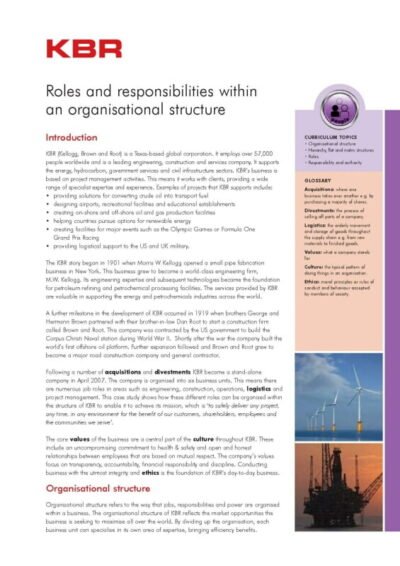The Book-to-Market Ratio (B/M ratio) is a financial metric that has garnered significant attention among investors and analysts alike. It serves as a comparative measure of a company’s book value relative to its market value, providing insights into the valuation of a firm. The ratio is particularly useful in identifying undervalued or overvalued stocks, making it a staple in value investing strategies.
By examining the relationship between a company’s intrinsic worth, as represented by its book value, and its current market price, investors can make informed decisions about potential investment opportunities. The B/M ratio is calculated by dividing the book value of a company’s equity by its market capitalisation. A higher ratio suggests that a stock may be undervalued, while a lower ratio may indicate overvaluation.
This metric is not only pivotal for individual stock analysis but also plays a crucial role in portfolio management and asset allocation strategies. As the financial landscape evolves, understanding the nuances of the B/M ratio becomes increasingly important for both seasoned investors and those new to the market.
Summary
- Book-to-Market ratio is a financial metric used to evaluate the relationship between a company’s book value and market value.
- Book value represents the net asset value of a company, while market value is the current market price of its shares.
- The calculation of Book-to-Market ratio involves dividing the book value per share by the market value per share, with a higher ratio indicating an undervalued stock.
- Book-to-Market ratio is important in investment analysis as it helps investors identify potentially undervalued or overvalued stocks.
- While Book-to-Market ratio has historical significance, it also has limitations and its application varies across different industries.
Understanding Book Value and Market Value
Book Value: A Conservative Measure of Worth
Book value refers to the net asset value of a company as recorded on its balance sheet. It is calculated by subtracting total liabilities from total assets, reflecting the equity that shareholders would theoretically receive if the company were liquidated. This figure is often seen as a conservative measure of a company’s worth, as it is based on historical costs rather than current market conditions.
Market Value: A Reflection of Current Market Conditions
In contrast, market value represents the current price at which a company’s shares are trading on the stock market. This value fluctuates based on supply and demand dynamics, investor sentiment, and broader economic factors. Market value can often diverge significantly from book value, particularly in industries characterised by rapid growth or technological innovation.
Understanding the Discrepancy between Book and Market Value
For instance, tech companies may have high market valuations due to future growth potential, even if their book values are relatively low. Understanding these two concepts is essential for interpreting the B/M ratio effectively, as it highlights discrepancies between perceived and actual company worth.
Calculation and Interpretation of Book-to-Market Ratio
The calculation of the Book-to-Market Ratio is straightforward yet powerful. It is derived using the formula: \[ \text{B/M Ratio} = \frac{\text{Book Value of Equity}}{\text{Market Value of Equity}} \] To illustrate this with an example, consider a hypothetical company with a book value of equity amounting to £500 million and a market capitalisation of £1 billion. The B/M ratio would be calculated as follows: \[ \text{B/M Ratio} = \frac{£500 \text{ million}}{£1 \text{ billion}} = 0.5 \] This result indicates that for every pound of market value, there is only fifty pence of book value.
Investors might interpret this low B/M ratio as a signal that the stock is overvalued or that the market has high expectations for future growth. Conversely, if another company has a book value of £800 million and a market capitalisation of £400 million, the B/M ratio would be: \[ \text{B/M Ratio} = \frac{£800 \text{ million}}{£400 \text{ million}} = 2.0 \] In this case, the higher ratio suggests that the stock may be undervalued relative to its book value, potentially presenting an attractive investment opportunity for value-oriented investors.
Importance of Book-to-Market Ratio in Investment Analysis
The Book-to-Market Ratio holds considerable importance in investment analysis for several reasons. Primarily, it serves as a tool for identifying potential investment opportunities within the equity markets. Investors often seek out stocks with high B/M ratios, as these may indicate undervaluation and present opportunities for capital appreciation.
This approach aligns with the principles of value investing, where investors aim to purchase stocks at prices lower than their intrinsic values. Moreover, the B/M ratio can provide insights into market sentiment and investor behaviour. A declining B/M ratio over time may suggest that investors are becoming increasingly optimistic about a company’s future prospects, leading to higher market valuations relative to book values.
Conversely, an increasing B/M ratio could indicate growing pessimism or concerns about a company’s financial health. By monitoring these trends, investors can adjust their strategies accordingly, either by capitalising on perceived mispricings or by exercising caution in their investment decisions.
Historical Significance of Book-to-Market Ratio
Historically, the Book-to-Market Ratio has played a pivotal role in shaping investment strategies and academic research. The concept gained prominence in the early 1990s when Eugene Fama and Kenneth French introduced their three-factor model, which included the B/M ratio as a key variable influencing stock returns. Their research demonstrated that stocks with high B/M ratios tended to outperform those with low ratios over extended periods, challenging the efficient market hypothesis and providing empirical support for value investing.
This historical significance extends beyond academic circles; it has influenced practical investment strategies employed by fund managers and institutional investors. Many value-oriented funds specifically target stocks with high B/M ratios as part of their investment philosophy. The historical performance of these strategies has led to a robust body of evidence supporting the notion that undervalued stocks can yield superior returns over time.
Limitations of Book-to-Market Ratio
Limitations of the Book-to-Market Ratio
Despite its utility, the Book-to-Market Ratio is not without limitations. One significant drawback is that it relies heavily on accounting practices and can be influenced by subjective estimates made by management regarding asset valuations and depreciation methods. For instance, companies in industries with substantial intangible assets—such as technology or pharmaceuticals—may report low book values relative to their market values due to limited tangible assets on their balance sheets.
Misleading Interpretations and Omissions
This discrepancy can lead to misleading interpretations of the B/M ratio. Additionally, the B/M ratio does not account for future growth potential or earnings prospects. A company with a high B/M ratio may be undervalued due to legitimate concerns about its future profitability or competitive position within its industry.
A Comprehensive View of Investment Potential
Conversely, firms with low B/M ratios may be experiencing rapid growth that justifies their elevated market valuations. Therefore, while the B/M ratio can provide valuable insights into valuation discrepancies, it should be used in conjunction with other financial metrics and qualitative analyses to form a comprehensive view of a company’s investment potential.
Application of Book-to-Market Ratio in Different Industries
The application of the Book-to-Market Ratio varies significantly across different industries due to inherent differences in business models and asset structures. In traditional sectors such as manufacturing or utilities, where tangible assets dominate balance sheets, the B/M ratio tends to be more reliable as an indicator of valuation discrepancies. Companies in these industries often have stable earnings and predictable cash flows, making them more amenable to traditional valuation metrics.
Conversely, in sectors characterised by rapid innovation and intangible assets—such as technology or biotechnology—the B/M ratio may not provide an accurate reflection of a company’s true worth. For example, tech giants like Amazon or Google may exhibit low B/M ratios due to their substantial investments in research and development and intangible assets like brand equity or proprietary technology. In such cases, investors must exercise caution when interpreting B/M ratios and consider additional factors such as growth rates, competitive advantages, and market positioning.
Furthermore, cyclical industries such as energy or materials may experience fluctuations in their B/M ratios based on commodity price cycles. During periods of economic downturns, companies in these sectors may see their market values decline significantly while their book values remain relatively stable, resulting in artificially inflated B/M ratios. Investors must therefore contextualise these ratios within broader economic trends and industry-specific dynamics.
Conclusion and Future Trends in Book-to-Market Ratio Analysis
As financial markets continue to evolve, so too will the relevance and application of the Book-to-Market Ratio in investment analysis. The rise of data analytics and machine learning technologies is likely to enhance investors’ ability to interpret financial metrics more effectively. Advanced algorithms can process vast amounts of data to identify patterns and correlations that may not be immediately apparent through traditional analysis methods.
Moreover, as environmental, social, and governance (ESG) factors gain prominence in investment decision-making processes, there may be shifts in how investors perceive value within companies. The integration of ESG considerations could lead to new frameworks for evaluating book and market values that extend beyond traditional financial metrics. In summary, while the Book-to-Market Ratio remains a valuable tool for assessing stock valuations and guiding investment decisions, its application must be nuanced and context-specific.
As markets evolve and new paradigms emerge, investors will need to adapt their approaches to ensure they remain informed and responsive to changing dynamics within the financial landscape.
The Book-to-Market Ratio is a key financial metric used by investors to evaluate a company’s value in relation to its market price. This ratio can provide valuable insights into a company’s financial health and potential for growth. In a related article on leadership lessons from successful entrepreneurs, Mansour Tawafi shares wisdom for the modern business leader. Tawafi’s insights can help business leaders make informed decisions about their company’s financial strategies and overall performance. To learn more about this topic, visit here.
FAQs
What is Book-to-Market Ratio?
Book-to-Market Ratio is a financial metric used to compare the book value of a company to its market value. It is calculated by dividing the book value per share by the market value per share.
How is Book Value calculated?
Book value is calculated by subtracting a company’s total liabilities from its total assets. The result is then divided by the number of outstanding shares to get the book value per share.
How is Market Value calculated?
Market value is the current price at which a company’s shares are trading in the stock market. It is determined by the supply and demand for the company’s shares in the market.
What does a high Book-to-Market Ratio indicate?
A high Book-to-Market Ratio indicates that the company’s book value is high relative to its market value. This may suggest that the company is undervalued by the market.
What does a low Book-to-Market Ratio indicate?
A low Book-to-Market Ratio indicates that the company’s market value is high relative to its book value. This may suggest that the company is overvalued by the market.
How is Book-to-Market Ratio used in investment analysis?
Book-to-Market Ratio is used by investors and analysts to identify potentially undervalued or overvalued stocks. It can be used as a screening tool to identify investment opportunities.
 Marketing strategy for growth (MP3)
Marketing strategy for growth (MP3)  Supporting new business start-ups (PDF)
Supporting new business start-ups (PDF)  Motivation within a creative environment (PDF)
Motivation within a creative environment (PDF)  Roles and responsibilities within an organisational structure (PDF)
Roles and responsibilities within an organisational structure (PDF)  Competitive advantage through diversity (PDF)
Competitive advantage through diversity (PDF)  Promoting social inclusion through access to legal services (PDF)
Promoting social inclusion through access to legal services (PDF) 

